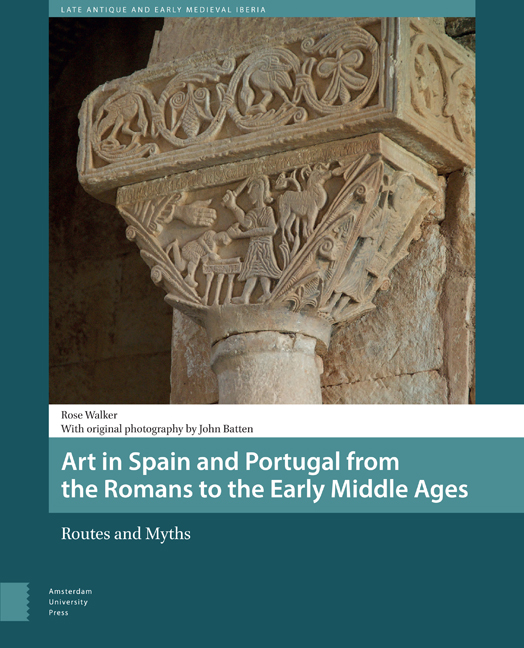Book contents
- Frontmatter
- Contents
- List of Illustrations
- Acknowledgements
- Conventions
- Abbreviations
- Introduction
- 1 The Lie of the Land: Art and Architecture Along the Roman Roads
- 2 Believing and Belonging: Late Antiquity and the Wider Mediterranean
- 3 The Visigothic Period: Fragmentation and Accretion
- 4 The Eighth and Ninth Centuries: Re-emergence and Invention
- 5 The Great Tenth Century
- 6 Dispersal After the Fall of the Caliphate
- 7 Trading Peace, Gold and Expertise, c. 1050-c. 1075
- 8 The Making of Romanesque: Reform and Synergy
- Epilogue
- Chronology 700-1100
- Bibliography of Cited Sources
- Index
5 - The Great Tenth Century
Published online by Cambridge University Press: 12 February 2021
- Frontmatter
- Contents
- List of Illustrations
- Acknowledgements
- Conventions
- Abbreviations
- Introduction
- 1 The Lie of the Land: Art and Architecture Along the Roman Roads
- 2 Believing and Belonging: Late Antiquity and the Wider Mediterranean
- 3 The Visigothic Period: Fragmentation and Accretion
- 4 The Eighth and Ninth Centuries: Re-emergence and Invention
- 5 The Great Tenth Century
- 6 Dispersal After the Fall of the Caliphate
- 7 Trading Peace, Gold and Expertise, c. 1050-c. 1075
- 8 The Making of Romanesque: Reform and Synergy
- Epilogue
- Chronology 700-1100
- Bibliography of Cited Sources
- Index
Summary
The tenth century was a period of great artistic invention, most evidently in the Byzantine Empire under Constantine Porphyrogenitus (r. 913-959), but also in ‛Abbāsid Samarra, Fatimid Cairo, Ottonian Trier, and Umayyad Córdoba. Each of these dynastic kingdoms looked to Byzantium for enrichment of their own visual cultures, and all had direct dealings with Constantinople through envoys, trade or marriage. The caliphs of Córdoba drew on the technical expertise of Byzantium and often attributed fine work to Byzantine craftsmen, even when it was executed by local artists. The Christian kingdoms in the north of the peninsula also gazed towards Byzantium, but their knowledge of it was mainly acquired through the prism of Córdoba. Such manifold layered Byzantine references in the architecture of the tenth century have led to considerable academic entanglement. On the other side of the Pyrenees, Carolingian France did not share fully in this cultural milieu and may have experienced a period of relative decline and disintegration at the end of the ninth century. The Iberian Christian kingdoms preferred to look south instead of north, and relations between them and al-Andalus fluctuated across the century. The first years saw the end of the reign of King Alfonso III of Asturias and that of Emir ‛Abd Allah in al-Andalus. Whilst the sons of the Asturian king were not without military success, ‛Abd al-Rahmān III (r. 912-961) made more rapid progress, and by 929 he was in a position to declare himself Caliph, a challenge to the ‘Abbāsids of Syria and to the Fatimids of Egypt. The reign of Ramiro II of León (r. 931- 951) brought some military success to the north, notably in the battle of Simancas (939). This enabled him, along with the counts of Castile and the king of Pamplona, to sign a peace treaty with ‛Abd al-Rahmān III in 941. Ramiro II's successors were weaker, however, and by the time that ‛Abd al-Rahmān III died twenty years later, León, Castile, and Pamplona were client states of al-Andalus. ‛Abd al-Rahmān had increased the number of professional slave soldiers in his army (Saqā-liba), a policy that helped him to extend his control into North Africa, through the conquest of Ceuta in 931 and a set of alliances with the Zanāta of the western Maghrib and the former Fatimid governor of Fez.
- Type
- Chapter
- Information
- Art in Spain and Portugal from the Romans to the Early Middle AgesRoutes and Myths, pp. 181 - 234Publisher: Amsterdam University PressPrint publication year: 2016



